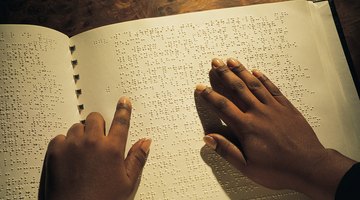Under the Individuals with Disabilities Act of 1975 (IDEA), every child in the United States is entitled to a free, appropriate education in the public schools. IDEA guarantees each student is educated in the least restrictive environment possible. There is debate about what is best and most cost effective for special education students -- mainstreaming, direct instruction or separate special education classes.
Special Education And The LRE
Under IDEA, students served by special education have a disability. The categories of disability, according to the National Dissemination Center for Children with Disabilities, include autism, developmental delay, emotional/behavior disturbance, intellectual disability, orthopedic impairment, learning disability, learning disabilities and speech and language impairment. IDEA states all students with a disability must be educated with their peers in a general education classroom as soon as possible. This is called the least restrictive environment, or LRE.
Mainstreaming and Inclusion
In public schools in the United States, roughly one-third of special education students are included in the general education classroom for most of the day or the entire day. Many states call this inclusion, or mainstreaming. A research study done in Great Britain found that inclusion did improve the vocabulary and social skills of students with intellectual disabilities but did not improve the amount of information they learned. Also, the costs of inclusion are very high. Many students who are in inclusion classes require a special education teacher or aide in addition to the regular education teacher, which is an additional expense for the school district. It is estimated that nationwide costs for inclusion may run as high as $90 billion dollars, according to "U.S. News & World Report."
Direct Service
Special education students with direct instruction for part of the day are taught by a special education teacher in a separate classroom in order to address their areas of difficulty. In some states, this is called direct service or the resource room. About 60 percent of special education students spent some time with direct instruction, according to a journal article in "Special Education for Students with Disabilities," which again requires a special education teacher and perhaps an aide to work with the general education teacher. The article also says the cost for direct instruction is lower per pupil than the cost per pupil for inclusion.
Self-Contained Classrooms
Self-contained classrooms may be the most expensive type of education, according to the article in "Special Education for Students with Disabilities." The cost of educating a student in a special education classroom all day is expensive, and some of the children in self-contained classrooms have complex medical needs that must be addressed. For example, the state of Georgia has set aside approximately three million dollars per year that districts can petition to be reimbursed for their students whose education -- because of their complex conditions -- is very expensive. The article cites a district whose costs for one student in a self-contained classroom totalled $100,000 for one year. Critics argue that the cost for the medically complex special education student could be reduced if such students are sent to the same school.
Related Articles
References
Writer Bio
Lori Garrett-Hatfield has a B.J. in Journalism from the University of Missouri. She has a Ph.D. in Adult Education from the University of Georgia. She has been working in the Education field since 1994, and has taught every grade level in the K-12 system, specializing in English education, and English as a Second Language education.











